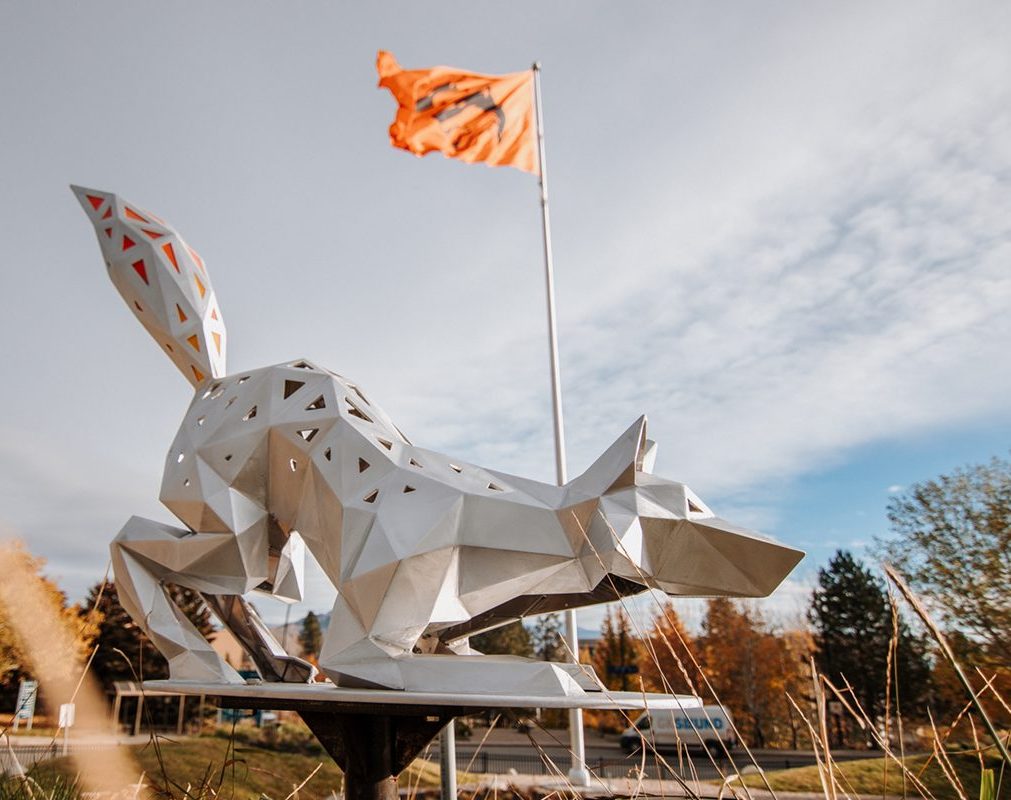By Kim Van Haren
A captivating new art installation at Thompson Rivers University (TRU) is garnering lots of attention with its four striking xgwélemc (fox) sculptures, inspired by a Secwépemc Stsptekwl: a traditional story or legend. These narratives are a crucial part of the Secwépemc’s oral tradition and play a key role in passing down knowledge and cultural values through generations.
TRU commissioned celebrated local artist and Distinguished Alumni Award recipient Bill Frymire — who is of Métis, Plains Cree and Scottish settler descent — to create the sculptures.
“Storytelling is always a big part of the work that I do, so I was happy to be part of this,” he says.
This isn’t Frymire’s first artistic contribution to the campus. In 2016, he created an impressive 16-foot mosaic of local NBA star Kelly Olynyk, followed six years later by a tiled Diversitree that adorns the front of the Early Childhood Education Centre.
The foxes join other Indigenous art installations on campus created by different artists, including the coyote sculpture atop the Brown Family House of Learning, the wolves in the roundabout on University Drive, the artwork on the Coyote Den student residence and the territorial marker near the elevator in Old Main.
“The new fox sculptures, inspired by a Secwépemc legend, beautifully enhance our campus and highlight our ongoing Indigenization efforts at TRU,” says Tina Matthew, executive director of the Office of Indigenous Education.
“They are a testament to our commitment to integrating Indigenous storytelling and perspectives into our community. As one of many Indigenous-inspired sculptures on campus, they play a crucial role in fostering cultural awareness and appreciation for the rich Secwépemc history that shapes our university.”
New residents on campus
Crafted from aluminum to ensure resilience, each 100-pound fox sculpture depicts various poses – crouching, leaping, jumping and landing – with progressively larger tails adorned with vibrant acrylic inserts.
 “I use aluminum a lot in my sculptures … and I wanted something that’s going to last a very long time and look basically the same in 20 years as it does today.”
“I use aluminum a lot in my sculptures … and I wanted something that’s going to last a very long time and look basically the same in 20 years as it does today.”
Situated in the middle of the traffic circle near the Trades and Technology Building, the four foxes symbolize the cardinal directions: east, south, west and north. For the Secwépemc, the number four is a significant, powerful number as it is prevalent in Secwépemc Stsptekwll, songs, dances and other cultural practices. A plaque will be installed that relates a Secwépemc story of the foxes.
Frymire dedicated a year to this ambitious project, navigating complex challenges that included ensuring precise angles came together properly and preventing the aluminum from warping during welding.
Frymire credits his friend and sculptor William McAusland for creating the miniature models based on his drawings, welders James West and Mike Caldwell for providing their expertise, and leveraging his own background in computer graphics for the final design.
“In a project of this size, it’s a communal effort. Everyone can be proud of what we’ve accomplished.”
He says the installation aims to connect the TRU community with Indigenous stories and shows how public art can enhance our quality of life by encouraging us to learn more about the cultural stories woven into the landscape.
“I think this will engage students and visitors to TRU,” he says. “They’ll learn a little bit more about the local Secwépemc people and history. It’s in one of the main roundabouts, so it’s something that you see from afar, and then as you get closer, you can see what’s happening here. Once there’s a plaque in place, visitors will be able to connect it with the Indigenous story.
“The sculptures add interest to your daily walk and make it a more interesting place to be. And on subsequent visits, you’ll discover something new.”
Learn how to pronounce xgwélemc (fox) with this audio file. Recording is by Ted Gottfriedson, Secwépemc cultural advisor for TRU.

